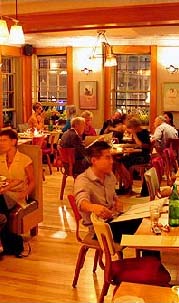Review Recap: The Redhead
 Wednesday, August 19, 2009 at 08:14AM
Wednesday, August 19, 2009 at 08:14AM With today’s one-star review of The Redhead, Frank Bruni’s tenure as restaurant critic is finally over. Why did he end with a one-star place, when he could have reviewed anything? I can only guess that this is the kind of restaurant where Bruni will be eating for fun, once he’s no longer paid to do it. Reviewing the three- and four-star places always seemed like a duty to him, not a joy.
Now more than ever, diners find principled, distinctive cooking in places where they wouldn’t have expected it before: dessert trucks, baseball stadiums, postage-stamp storefronts, wine bars, taverns and cocktail lounges. In fact the Redhead was mostly a tavern and cocktail lounge during that span of Thursday-only dinners, which exemplified the possibility of terrific eating with untraditional trappings and captured the sense of gastronomic serendipity that defines this culinary moment.
With its first-come-first-served seating policy and its televisions showing sporting events behind the bar, the Redhead speaks to the moment’s casual ethos. And it underscores the extent to which the East Village has become a center of gravity for young chefs intent on bold flavors. They clearly feed off of one another, a loose network of validation and motivation.
This was one of the most positive one-star reviews that Bruni has ever filed, but it does underscore one of the worst failures of his tenure. Most of his one-star reviews were insults. His last three one-star reviews — Spice Market, Bar Artisanal, and Monkey Bar — were negative. Those reviews create the perception that one-star restaurants are bad. I’ll bet the owners of The Redhead are getting condolence calls today, which is clearly not what Bruni intended.
 Redhead in
Redhead in  Review Recap
Review Recap 








